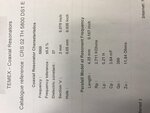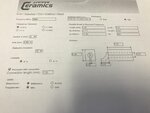mury
Newbie level 5
Hello,
I would like to design oscillator for 5.8GHz. It has to be with current consumption <5mA with 5V or 3,3V it doesn't matter. Phase noise should be as low as possible. Output power has to be over 3dBm. And of course price as low as possible.
I would like to use coaxial dielectric resonator which has 5.8GHz resonance.
I have some types of BJT - for example - BFU725, BFU660 or BFU630.
Is it possible to make it from these points?
How should I start because I am rookie at oscillator designing. I read some articles but the most important is to try it practicaly (meet paper stuff with practical board). I can use MWO for that.
Thank you
I would like to design oscillator for 5.8GHz. It has to be with current consumption <5mA with 5V or 3,3V it doesn't matter. Phase noise should be as low as possible. Output power has to be over 3dBm. And of course price as low as possible.
I would like to use coaxial dielectric resonator which has 5.8GHz resonance.
I have some types of BJT - for example - BFU725, BFU660 or BFU630.
Is it possible to make it from these points?
How should I start because I am rookie at oscillator designing. I read some articles but the most important is to try it practicaly (meet paper stuff with practical board). I can use MWO for that.
Thank you

